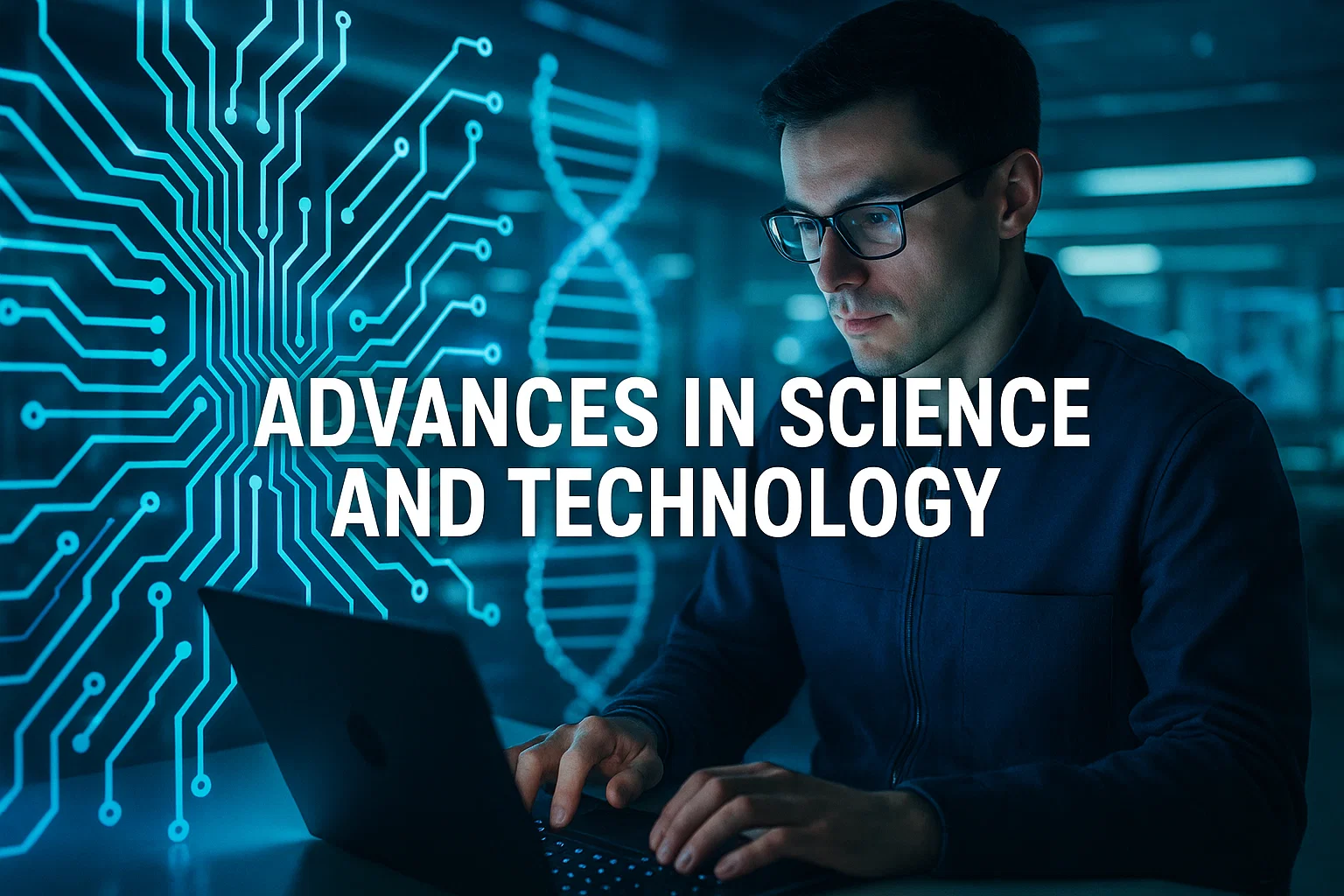Recent developments in science and technology include faster, cheaper multimodal AI, major steps toward fault-tolerant quantum machines, and more precise gene editing tools; use this guide to understand impacts, prototype responsibly, and pick tools to experiment with immediately.
Introduction
Recent developments in science and technology are reshaping how you build products, run experiments, and plan research. This article is informational and practical: I’ll summarize the key trends across AI, quantum, and biotech, explain why they matter, and give step-by-step actions you can use to test ideas or de-risk projects. You’ll get developer-friendly code examples, tool recommendations, and a compliance checklist so you can move from idea to prototype with fewer surprises. In my experience, focusing on small, measurable experiments—rather than broad predictions—helps teams capture real value quickly.
What the recent developments in science and technology are, and why they matter
The landscape is crowded, but three converging threads stand out: multimodal and cheaper AI models, progress toward scalable quantum systems, and higher-precision gene editing platforms. Each reduces a distinct barrier—understanding, compute limits, and biological precision—so the combination widens practical use cases across industry.
AI teams are shipping improved multimodal models that handle text, images, audio, and video more reliably while lowering compute costs, enabling new product designs and automation workflows. A recent model release described as an “intermediate” step demonstrates lower training cost for similar capabilities, which increases competition and accessibility for smaller teams. Reuters
Quantum hardware groups and industry roadmaps now emphasize error correction and fault tolerance as realistic near-term goals, moving quantum from experimental demos toward systems designed for sustained, useful computation. Large investments and planned facilities signal that quantum will be a practical tool for certain simulation and optimization tasks sooner than many expected. Reuters
Biotechnology is converging on more precise editing tools, like prime editing and refined base editors, which reduce off-target changes and make therapeutic editing more feasible for a wider range of diseases. Early clinical and preclinical results show the promise of safer, more predictable edits. Labiotech.eu
Why this matters to you: these advances lower the cost and risk of experimentation. Multimodal AI opens UX and automation possibilities, quantum roadmaps change long-term compute planning, and gene-editing improvements expand therapeutic and biotech product designs. Each area still needs careful validation, but the practical entry points are clearer than before.
Practical next steps: how to test these developments, step-by-step
Use a disciplined experiment loop to turn trends into validated outcomes.
- Pick one small, measurable hypothesis
- Example: “A multimodal assistant will cut support ticket handling time by 30 percent,” or “A small prime-editing proof-of-concept will correct a model mutation in vitro.”
- Choose an accessible platform
- For AI, use available model APIs or open checkpoints with reduced-cost inference. For quantum simulation, use cloud quantum simulators to model your algorithm before hardware runs. For biotech, partner with an academic lab or CDMO for safe, compliant bench work.
- Prototype quickly
- Build a minimal end-to-end flow: ingest sample data, run inference or simulation, and measure a single success metric. Keep runs small and reproducible.
- Measure and validate
- Collect both technical metrics (latency, error rates, off-target edits) and human outcomes (user time saved, biological effect size).
- Document and plan scale
- If the pilot succeeds, prepare an operational plan: cost estimate, compliance needs, and an incremental rollout or preclinical pathway.
Example code: fetch recent AI model releases or paper titles (Python)
# python
# Minimal script to search arXiv for recent papers mentioning "multimodal"
# Replace with your query and use proper rate limits for production
import requests
def search_arxiv(query="multimodal", max_results=5):
try:
url = "http://export.arxiv.org/api/query"
params = {"search_query": f"all:{query}", "start": 0, "max_results": max_results}
r = requests.get(url, params=params, timeout=10)
r.raise_for_status()
return r.text[:1000] # print a small preview
except Exception as e:
print("arXiv query failed", e)
return None
print(search_arxiv("multimodal AI"))
Explanation: This snippet shows a quick pattern for discovering recent papers; swap the query to match your focus. Respect API usage rules and parse Atom XML in production.
Where to focus: best practices, tools, and quick-start resources
To benefit from recent developments in science and technology, combine pragmatic tooling with governance and reproducibility.
Best practices
- Start with reproducible notebooks and locked dependencies.
- Use versioned datasets and experiment tracking for AI and simulation runs.
- For biological work, prioritize ethical review, validated assays, and partner labs with GLP standards.
- Build security and data governance into AI deployments from day one.
Recommended tools and one-line tips
Hugging Face & model hubs — Pros: access to open and experimental multimodal models, easy deployment. Cons: model quality varies, some need fine-tuning. Tip: prototype with hosted inference to test UX quickly.
Cloud quantum simulators and provider SDKs (IBM, PsiQuantum partners) — Pros: let you prototype algorithms before hardware runs. Cons: real hardware access requires scheduling and may cost more. Tip: simulate with small qubit counts to validate logic. IBM Newsroom
Bench-to-cloud biotech platforms and CROs — Pros: accelerate bench experiments with compliance support. Cons: cost and timelines for wet lab validation. Tip: use a contract lab for early-stage validation and to manage biosafety. News Center
How to evaluate a tool or platform
- Check published benchmarks or papers when available.
- Review community or vendor-supported reproducibility examples.
- Confirm SLAs and data controls for production use.
Dealing with challenges, ethics, and troubleshooting
Advances bring power and responsibility. Address safety, legality, and reproducibility explicitly.
Common technical and ethical challenges
- Model hallucinations and biases in multimodal AI require evaluation on representative datasets and human-in-the-loop controls.
- Quantum noise and error correction remain a deployment challenge; plan fallback classical computations. IBM Newsroom
- Biotech safety and off-target edits demand rigorous assays and ethical review before any in vivo work. News Center
Compliance checklist
- For AI: document training data sources, privacy controls, and explainability measures.
- For quantum: plan for provenance of results and reproducible simulation artifacts.
- For biotech: secure IRB or equivalent approvals, follow biosafety and clinical trial regulations, and ensure informed consent for human work.
Alternatives and mitigations
- Use synthetic or de-identified data where feasible.
- Keep sensitive experiments in partnership with accredited labs.
- Favor L2 or hybrid architectures to reduce cost and risk for production AI.
Industry roadmaps show that error correction, system integration, and ecosystem building are the main steps now toward useful quantum systems, not just qubit count. (IBM)
Reporting on gene-editing advances stresses safer, lower-error methods as the practical path to therapeutic applications, which reduces translational risk. (Nature) Nature
Conclusion and CTA
Recent developments in science and technology make practical experimentation more accessible than before, but success depends on controlled pilots, good tooling, and clear governance. Start with a focused hypothesis, prototype on accessible platforms, validate carefully, and scale with compliance baked in. Key takeaways: experiment small and reproducibly, prioritize safety and governance, use cloud and partner tools to accelerate learning.
Welcome to Alamcer, a tech-focused platform created to share practical knowledge, free resources, and bot templates. Our goal is to make technology simple, accessible, and useful for everyone. We provide free knowledge articles and guides in technology, offer ready-to-use bot templates for automation and productivity, and deliver insights to help developers, freelancers, and businesses. If you want help designing an experiment, wiring model APIs, or building a compliant biotech pilot, Alamcer can help you get started.
Further reading and reputable sources
- IBM roadmap for large-scale, fault-tolerant quantum computing, technical overview. IBM Newsroom
- Reuters coverage of major quantum facility investments and industrial initiatives. Reuters
- Reporting on AI model releases and efficiency improvements. Reuters
- Reviews of precise editing and clinical progress in gene editing research. News Center
Bold takeaways:
Prototype small, measure clearly, and prioritize safety., Use partner labs and cloud tools to lower cost and risk., Document every experiment for auditability and learning.
FAQs
recent developments in science and technology
Recent developments in science and technology refer to the newest, practical advances across fields like AI, quantum computing, and biotechnology, including more accessible multimodal models, progress toward fault-tolerant quantum systems, and improved gene-editing techniques.
How can I test a new AI capability quickly?
Use hosted model APIs or open model checkpoints, create a narrow prototype that measures a single metric, and run A/B tests with real users to validate value before investing in production infrastructure.
Are quantum computers practical for real tasks today?
Quantum devices are increasingly useful for simulation and optimization experiments, but many real-world tasks still need hybrid classical-quantum approaches; follow provider roadmaps to plan medium-term experiments. IBM Newsroom
What safety steps are essential for gene-editing experiments?
Prioritize institutional approvals, validated assays, partner with accredited labs, and follow biosafety and ethical guidelines to reduce risk and ensure translational value. News Center
Which tools help track recent science and tech papers?
Use arXiv feeds, curated model hubs like Hugging Face, and specialized dashboards or literature services to stay current; automate alerts for topics you track.
How do I evaluate a new model or paper?
Look for reproducible code, clear datasets, baseline comparisons, and independent benchmarks; prefer work with open artifacts you can run yourself.
Should startups build on bleeding-edge tech?
Build small, focused experiments to validate value, but avoid putting critical production systems on unproven infrastructure until you have redundancy and rollback plans.
How do I manage compliance for AI and biotech projects?
Document data sources, consent, privacy controls for AI, and secure IRB approvals and GLP practices for biotech. Consult legal and compliance teams early.
Where should I learn hands-on quantum or gene-editing skills?
Start with provider tutorials for quantum SDKs, and accredited courses or partnerships for lab work; use simulation platforms before requesting scarce hardware or bench time.
When should I consult a professional?
For legal, clinical, or high-risk deployments in biotech or critical AI systems, consult domain-specific professionals to ensure safety and regulatory compliance.
Compliance & disclaimer
This article is educational and not legal, medical, or regulatory advice. Follow platform Terms of Service and relevant privacy and biosafety regulations when handling data or biological materials. For specific legal, clinical, or regulatory guidance, consult a qualified professional.



